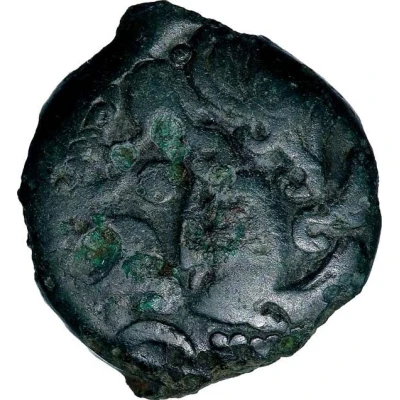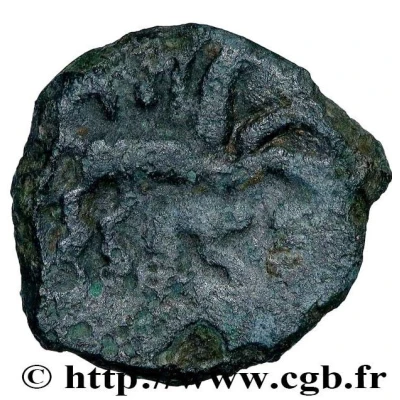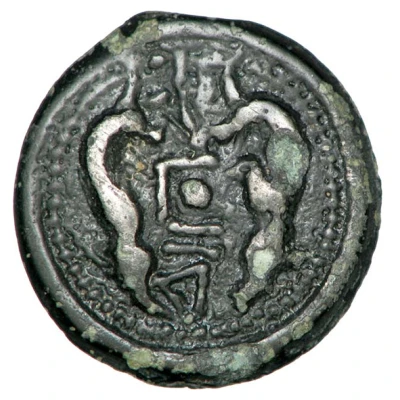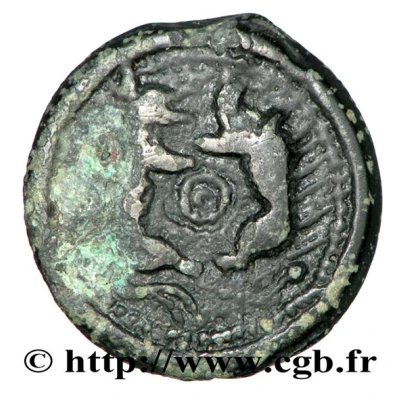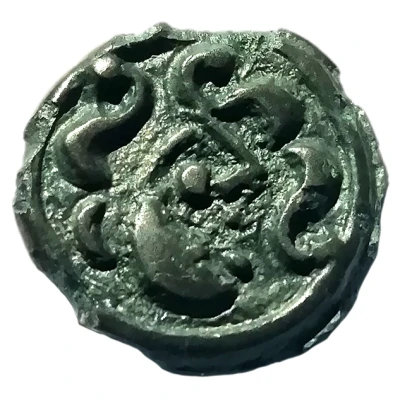
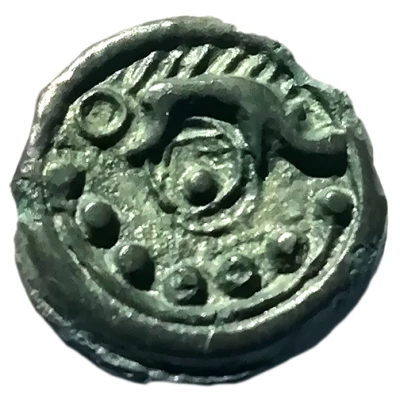

Obverse © Tichat40
Potin with boar, torc and globules 60 BC - 30 BC
| Potin | 3.62 g | 17.5 mm |
| Issuer | Suessiones (Gallia Belgica) |
|---|---|
| Type | Standard circulation coin |
| Years | 60 BC - 30 BC |
| Composition | Potin |
| Weight | 3.62 g |
| Diameter | 17.5 mm |
| Shape | Round (irregular) |
| Technique | Cast |
| Orientation | Coin alignment ↑↓ |
| Demonetized | Yes |
| Updated | 2024-10-10 |
| Numista | N#230531 |
|---|---|
| Rarity index | 90% |
Reverse
A ringlet pointed at the center of the potin; a boar-sign on the right above, a pointed torc surmounted by five globules below and a ringlet behind the boar.
Comment
The New Atlas of Gallic Coins notes 3 variants of this coin:DT 530 (Var. 1), DT 531 (Var.2) and DT 531 A (var.3). The distinction is made at the level of the obverse and the face:
530: Very stylized profile on the left whose general shape is rectangular and surrounded by S motifs, 2 of which are opposite above the head.
531: The profile is "luniform" and the neck is well figured. 2 Globules to the right in front of the mouth
531 A: "Mangled" profile, only cheek and eye remain. None in the field.
Interesting fact
One interesting fact about this coin is that it features a unique combination of symbols, including a boar, torc, and globules, which were likely used to represent the cultural and religious beliefs of the Suessiones tribe in Gallia Belgica. The use of these symbols on the coin suggests that they held significant importance for the tribe and may have been used in religious rituals or ceremonies. Additionally, the fact that the coin was made of Potin, a type of ancient Celtic metal alloy, adds to its historical significance and provides insight into the metalworking techniques and traditions of the time.
